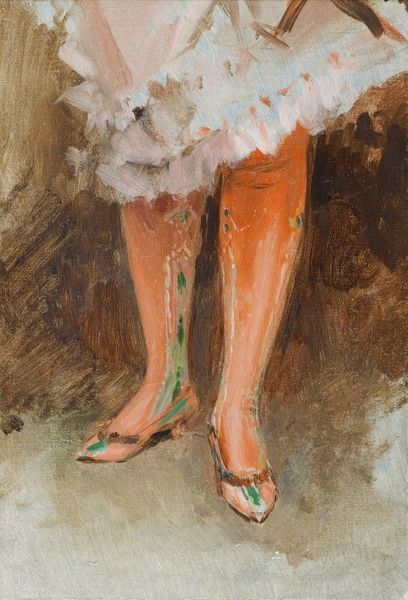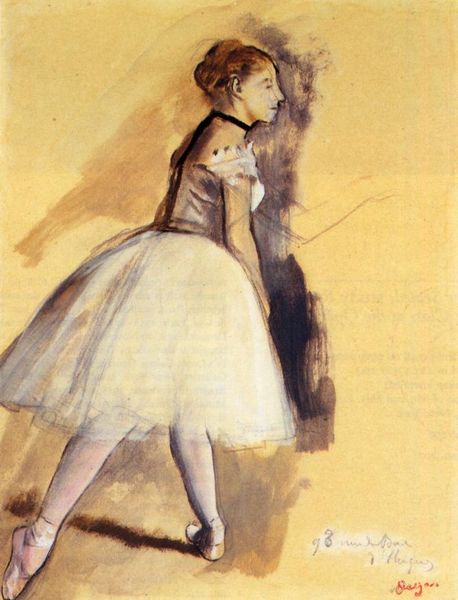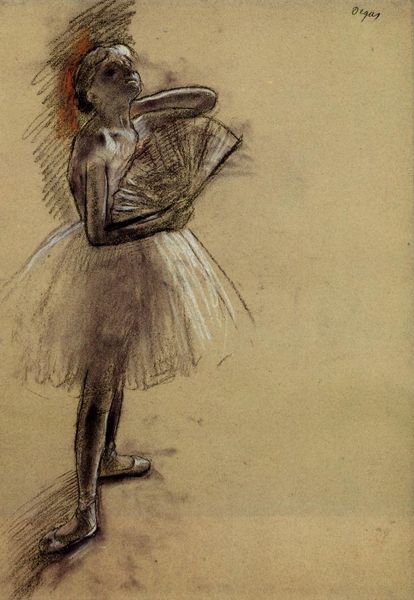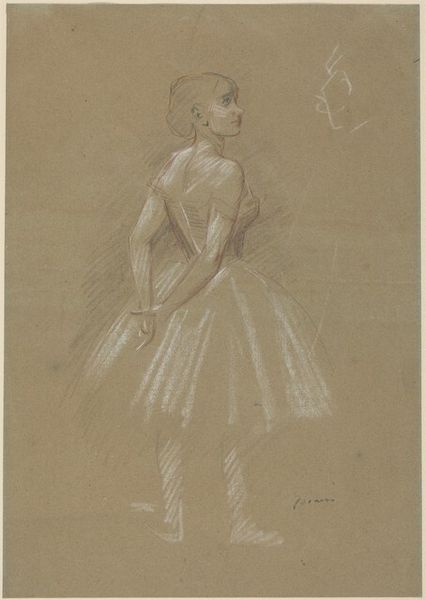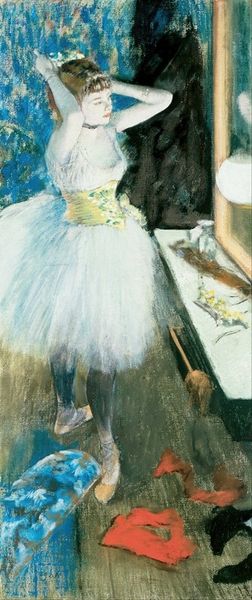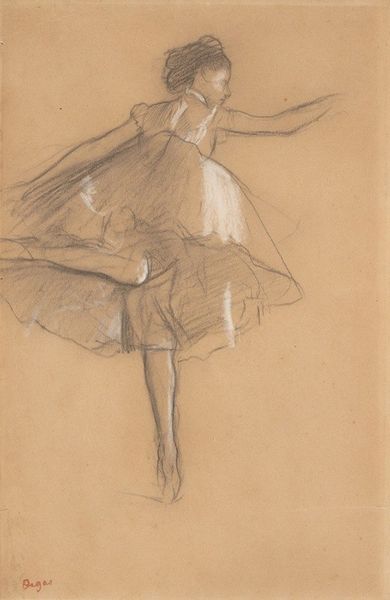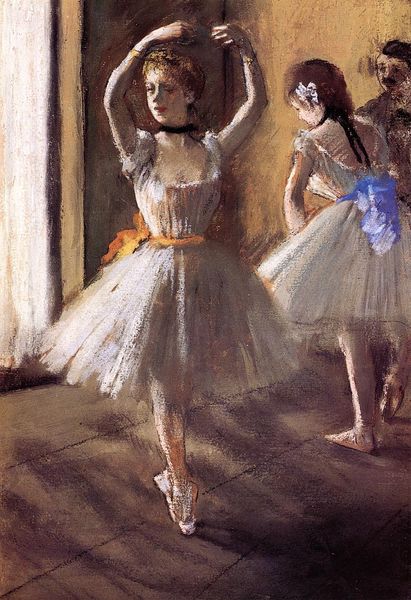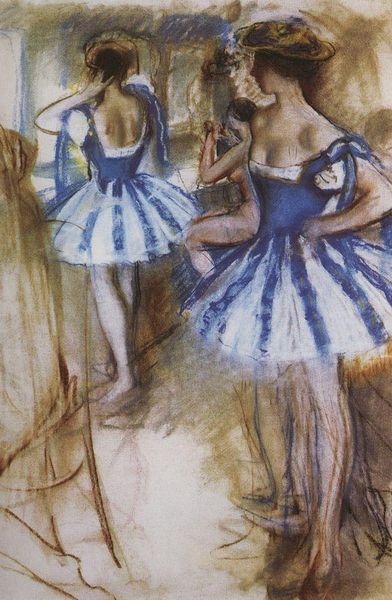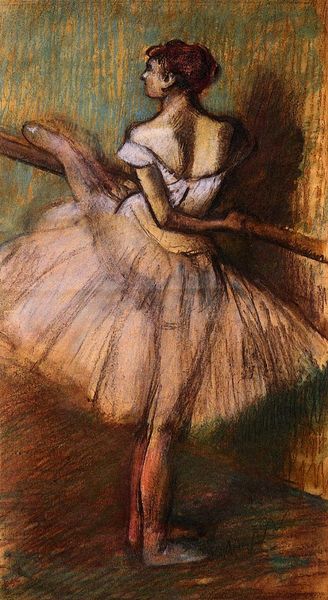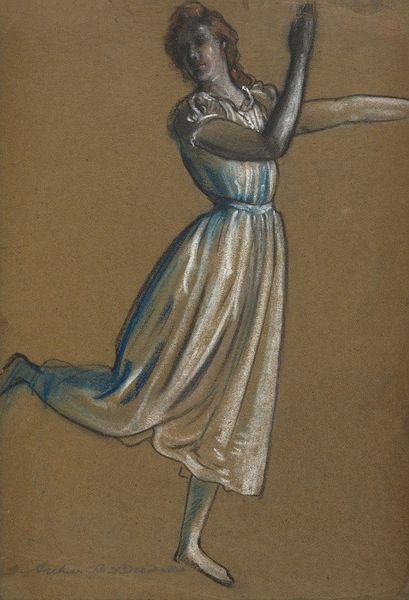
drawing, pastel
#
portrait
#
drawing
#
figurative
#
impressionism
#
charcoal drawing
#
figuration
#
pastel chalk drawing
#
genre-painting
#
pastel
Copyright: Public Domain: Artvee
Editor: We're looking at "Dancer," a pastel and charcoal drawing by Edgar Degas, created around 1880. There's something so intimate about it; she seems caught in a moment of quiet preparation. What strikes you about this piece? Curator: Oh, Degas! He wasn't just painting dancers; he was painting the space *around* the dance, wasn’t he? This feels like a backstage whisper, a stolen glance. See how the blue ribbon practically hums against the muted tones? It's a burst of contained energy, like a tightly wound spring. Do you feel that sense of anticipation radiating from her posture, almost like a pre-performance ritual? Editor: Absolutely! It’s almost voyeuristic. I initially focused on the central figure, but the other dancers in the background add this layer of depth that suggests the collective effort and tension of the dance. Curator: Exactly! Degas lets you peek behind the curtain, see the grit behind the glitter. The fleeting quality of pastel perfectly captures that sense of impermanence, doesn’t it? These moments of preparation, of almost-readiness… they’re just as vital as the performance itself, wouldn't you agree? Almost like life itself is in these seconds of suspense. Editor: It’s fascinating to think of this as a portrayal of not just the dancer, but the human condition as a whole, especially as he returned to this subject repeatedly over his life. It shifts the whole perception. Curator: Well, it makes me want to rush to the theatre and linger until the curtain rises! Degas gives us the quiet before the storm of applause. Editor: I totally agree, that was very insightful and broadened how I viewed the artwork. Thanks!
Comments
No comments
Be the first to comment and join the conversation on the ultimate creative platform.
